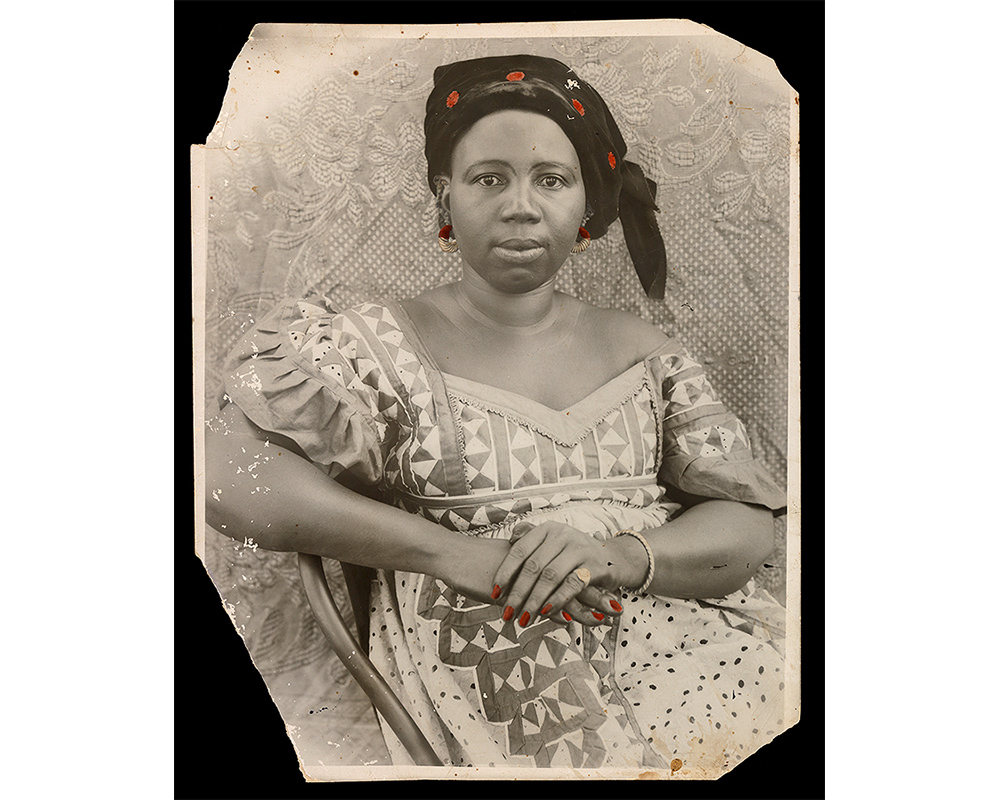
Keїta’s Legacy
Guest blogger Petru Bester is a Smith College student, class of 2015, with a major in Art History. She is a Student Assistant in the Cunningham Center for the Study of Prints, Drawings and Photographs.
This semester, Dr. Amanda Gilvin, the Five College Mello Postdoctoral Fellow in African Art and Architecture for both Mount Holyoke and Smith College helped put together a temporary African art exhibition entitled Transformations in African Art, currently on view on the 3rd floor of the Museum.
Involving her ARH 280 African Art Survey students, Professor Gilvin made the exhibition an interactive learning experience. She states that by working in conjunction with museum staff members:
As a student in Amanda’s class, I was fortunate enough to be assigned Seydou Keїta’s Malian Woman (shown above), just one of many gorgeous objects on display.
Building on the rich African tradition of portrait photography, Seydou Keїta worked through the mid to late 20th century documenting Bamako society in Mali at a time of considerable social and political change. Resting in northwest Africa, the Republic of Mali has a long and complex history of extensive empires and colonial rule. What was then known as the Mali Federation gained independence from the French on June 20th, 1960. In August of the same year Senegal withdrew from the federation leaving the Sudanese Republic to form its own nation state, the Republic of Mali in September. The Pan-Africanist Modibo Keїta was the country’s first elected president.
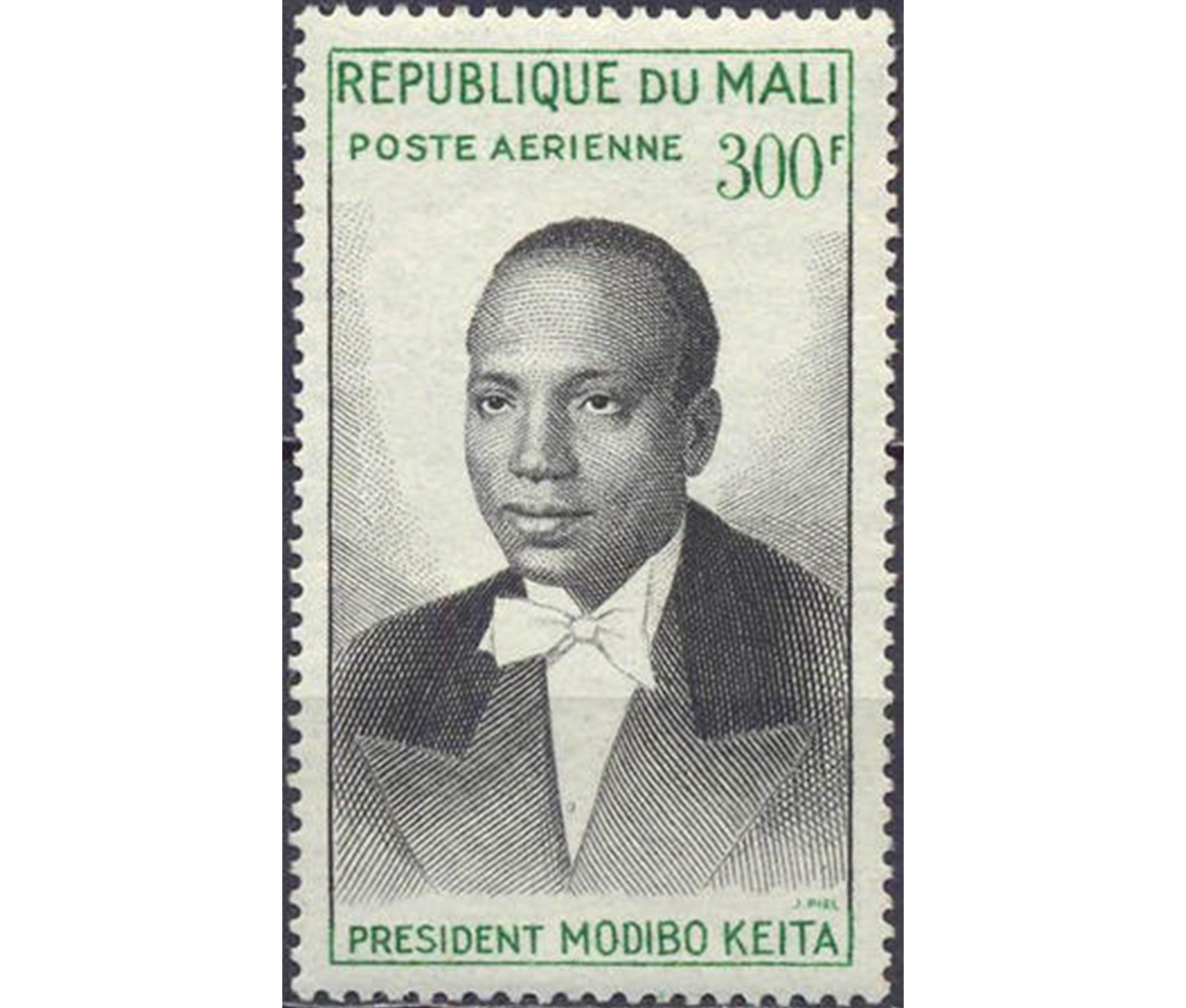
1961 airmail stamp featuring Modibo Keїta (not owned by SCMA)
Born in 1921, Modibo Keїta’s relative, Seydou Keїta began his love affair with photography at a young age in 1935. In 1948 he opened a studio in the capital of Mail, Bamako. He worked from this studio until 1962 when he became the newly installed government’s official photographer. A successful coup d’état by Moussa Traoré in 1968 removed Modibo Keїta from power. Despite their relationship, however, Traore and his people kept Seydou on as their photographer. Modibo Keїta was imprisoned until his death in 1977. Seydou subsequently retired the same year.
Both Modibo and Seydou remain cultural icons in Mali. In 1992 the Traoré regime was overthrown and Modibo Keїta’s legacy was revived: a monument to him was erected in Bamako on June 6th, 1999. Seydou’s memory far surpasses that of Modibo as his photographs still circulate around the world and are displayed within prominent museums and gallery spaces. The Smith College Museum of Art, in their recent effort to expand and solidify their African art collection, acquired Malian Woman, a rare hand tinted print from Seydou’s studio years.
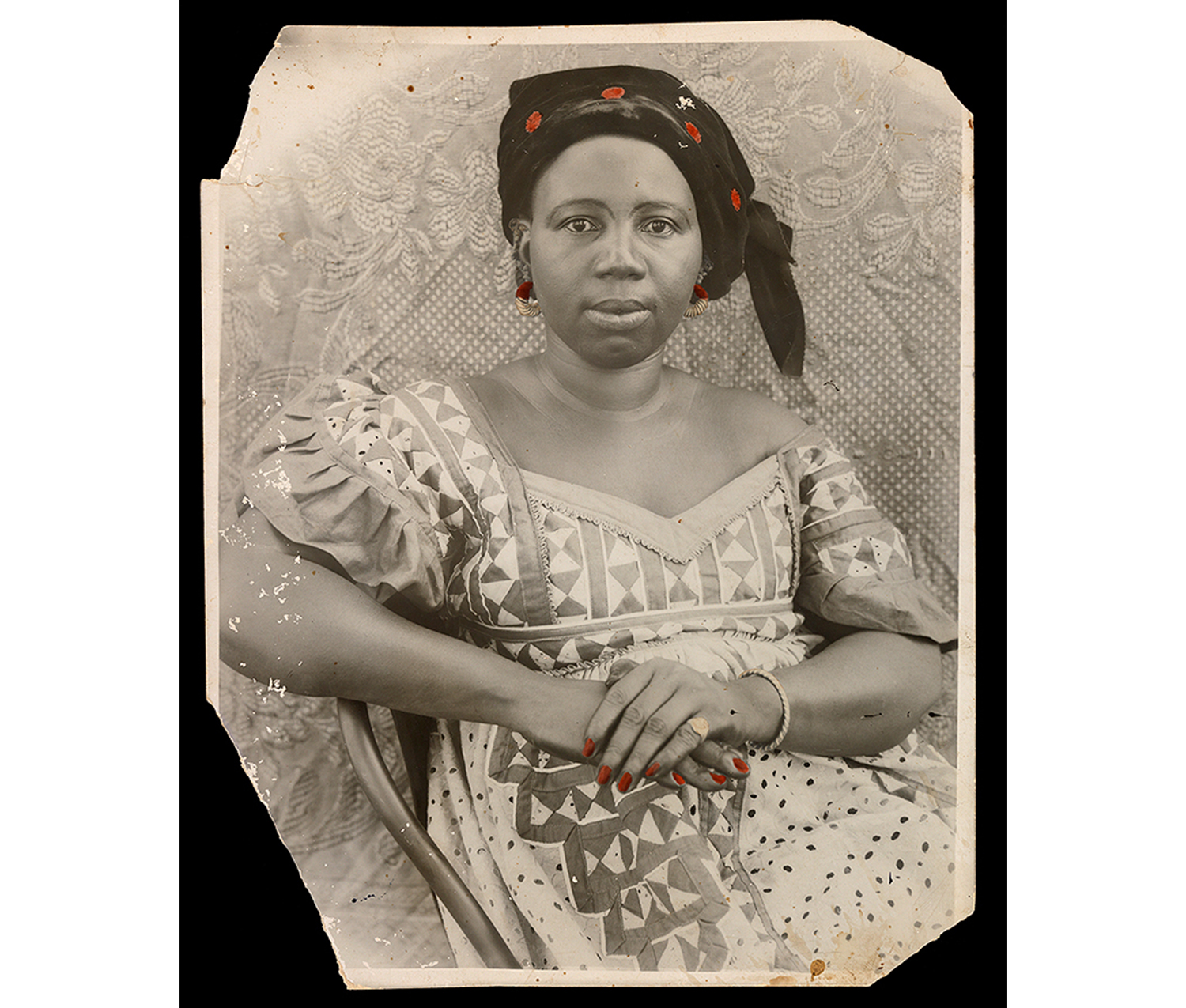
Seydou Keїta. Malian, 1921–2001. Malian Woman, 1949–1951. Vintage gelatin silver print with hand tinting. Purchased. Photography by Petegorsky/Gipe. SC 2013.50.2.
Seydou Keїta, throughout his successful career, produced an assortment of graphically intricate portraits of both individual and group sitters. This particular photograph displays Keїta’s ability to juxtapose decoratively patterned textiles. Here the floral background contrasts with the sitter’s geometric dress creating dynamic movement both within and between the textiles.
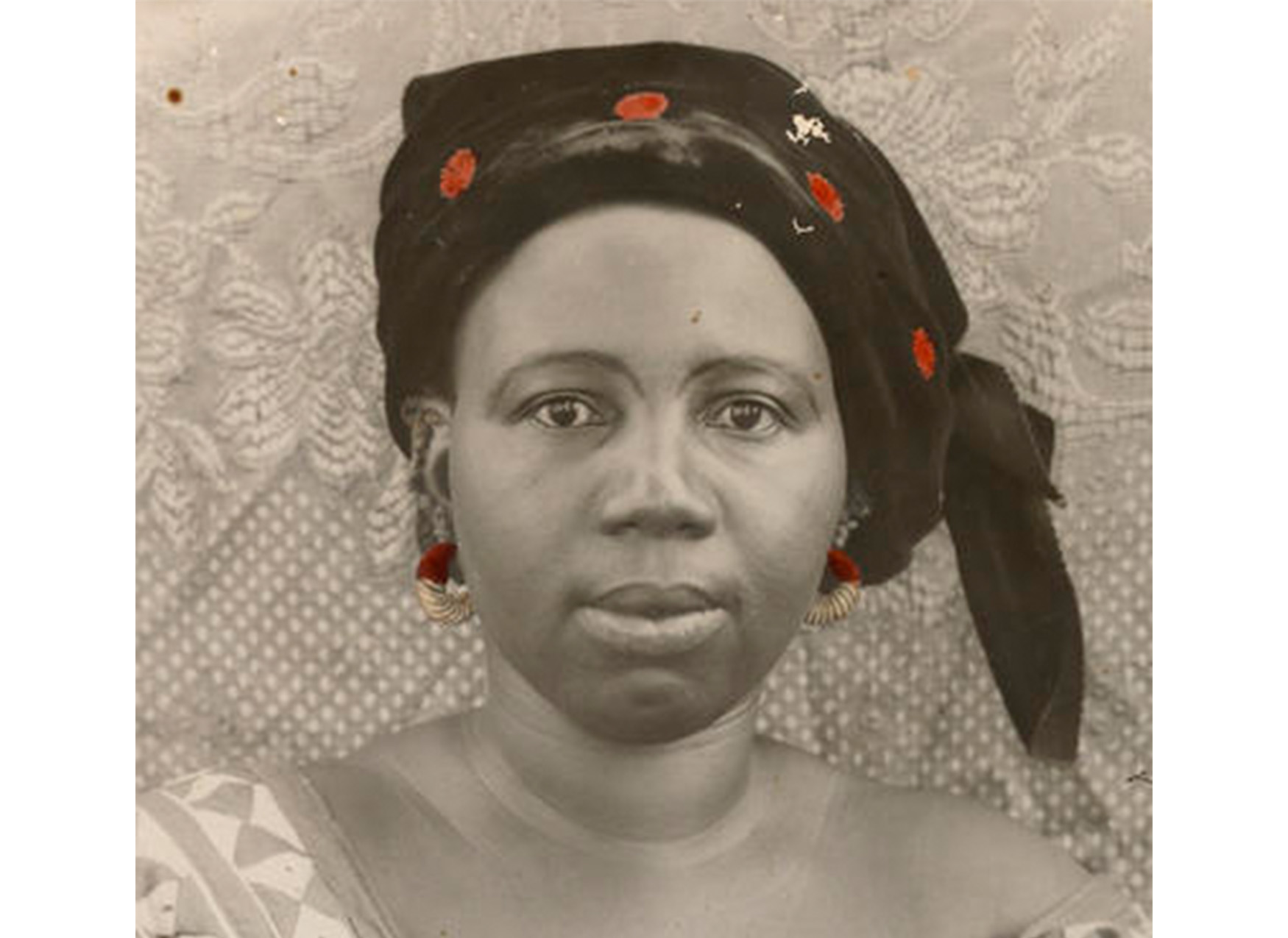
Detail of Malian Woman
The woman’s red tinted fingernails, earrings and headscarf serve to enhance the dimensionality of the print. Keїta is able to create formal images that somehow also maintain a sense of remarkable intimacy with his subjects. Speaking to his own ability Seydou Keїta quotes: “It’s easy to take a photo, but what really made a difference was that I always knew how to find the right position, and I was never wrong. Their head slightly turned, a serious face, the position of the hands . . . I was capable of making someone look really good.”
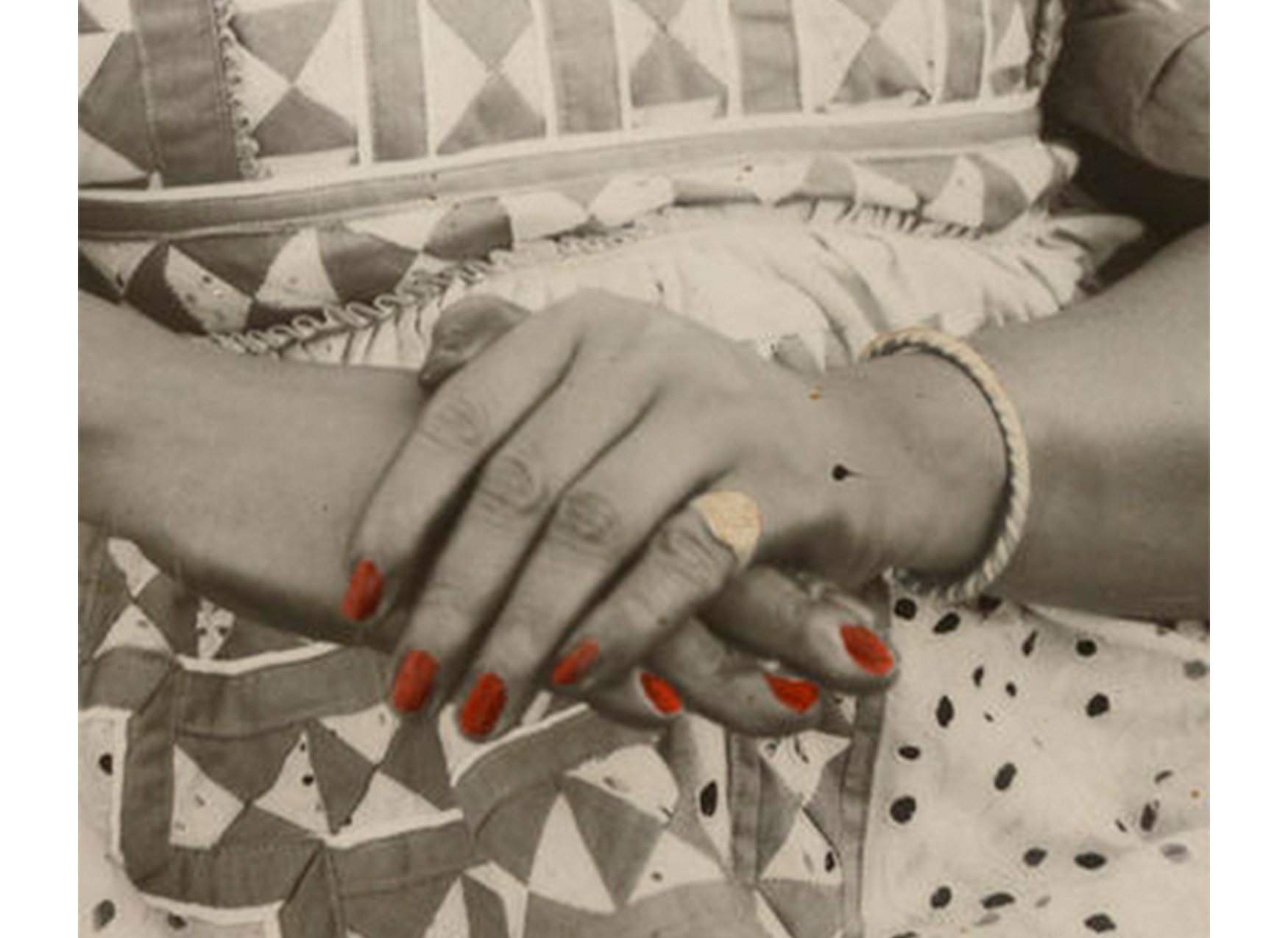
Detail of Malian Woman
The mastery shown by Keїta is only one of the many reasons his work is so well acclaimed both within and beyond Africa. Affectionately called the “Father of African photography”, Keїta was not just innovative and instrumental in the technical and aesthetic development of portrait photography but he also, consciously or not, commented on the West’s conception of a fetishized exotic African identity. His work serves to debunk the ever popular “ethnographic” black-and-white images of naked, primitive Africans. Keїta directly opposes these images with portraits of hip, cosmopolitan Malian citizens. This acquisition, and thankfully its display, is therefore an invaluable one. Keїta’s legacy lives on, modestly hanging from a wall in a SCMA gallery.
The exhibition “Transformations in African Art," and Malian Woman will be on view on the 3rd floor of the Museum until May 26, 2014, when the 2nd and 3rd floor galleries close for re-installation.